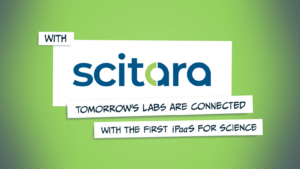How many of you know the game Telephone? If you do, great! But for those who don’t know or don’t quite remember the details, here is a quick refresher. Telephone is normally played with a large group of people. One person comes up with a sentence or phrase and whispers it to an adjacent player. Participants will take turns hearing the message and relaying what they remember further down the line. Eventually, the message returns to its creator, who then tells everyone what they heard and what they initially said. The objective? Keep that initial message exactly the same, no changes or discrepancies whatsoever. Now, hearing how different the message became at the end of a Telephone round is half the fun of that game, but for today’s topic? Quite the opposite. And what is that topic?
Data Integrity! Before delving deeper, what is data integrity? In short, it is the assurance that all data concerning something is always kept accurate and consistent throughout its entire lifecycle. No matter how many times it is accessed, the data is preserved as is. Kind of like the message in Telephone, you want the data to be exactly the same no matter who accesses it.
Keeping data intact is quite crucial for… well, really anyone in any industry. Data that is modified – whether through mechanical failures, human error, or malcontents – can have potentially catastrophic effects on a project. Even something as small as an added integer or decimal point can throw everything into flux. And when lots of people are involved, these risks increase, and the data has a higher chance of modification (kind of like the message in Telephone). Therefore, having systems in place to not only preserve original data but also detect changes is crucial.
As it stands, there are a number of ways – albeit a small number – to achieve this data security. Regular backups can help avoid data loss or corruption during power outages, surges, or any other similar incidences. Having copies of data – both physical and digital – are also options for backups. Of course, those will need to be cross-referenced with other copies to ensure the data is exactly the same. Certain file systems can also help detect data corruption – such as Btrfs and ZFS formats – by checking internal data and metadata. Some of that data can actually be restored when used in tandem with hardware systems. Scitara’s Digital Lab Exchange DLX™ is one such suite that helps sustain data integrity, especially for data in flight, by allowing automated workflows that can catch and reconstruct corrupted data.
And there you have it. A little crash course on data integrity, a tedious yet crucial aspect of the modern world. It requires a constant watch by discerning eyes and reliable protocols and systems to not just catch and restore transformed data, but even trace its cause. Or perhaps, in other words, it’s all just a bunch of different rounds of Telephone, with all of us trying to keep that original message alive and unchanged.
About Scitara
Scitara is a global provider of cloud-based, industry-specific platform and solutions for the life sciences industry. Based in Massachusetts, the Scitara leadership brings decades of experience in solving digital challenges for the scientific laboratory: Meet the Modern Lab™. For more information, please visit www.scitara.com.
Media Contact
scitara@scottpr.com
